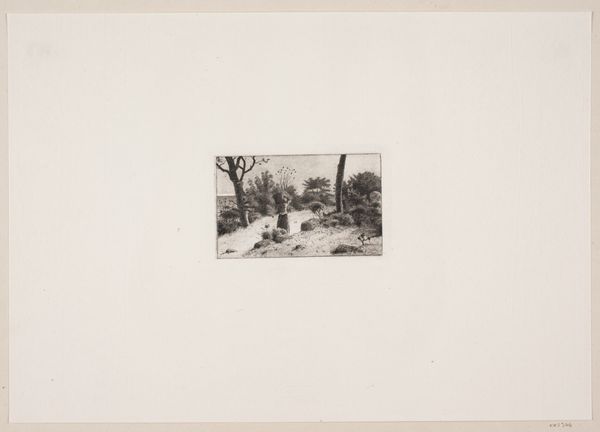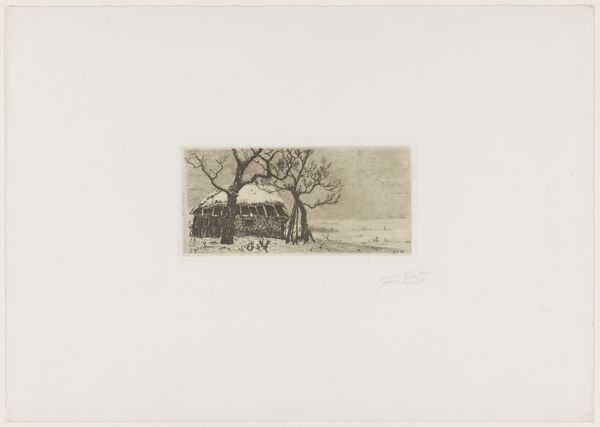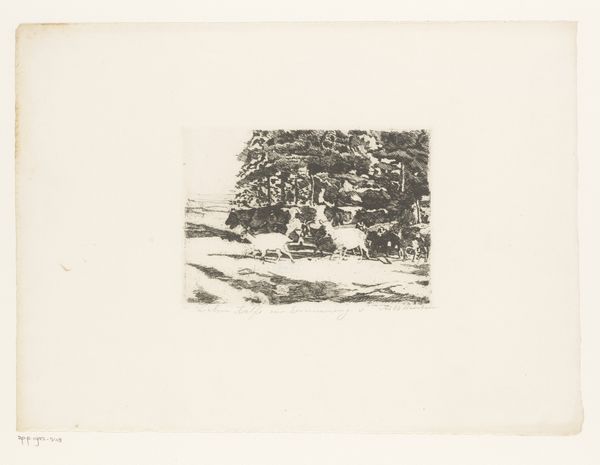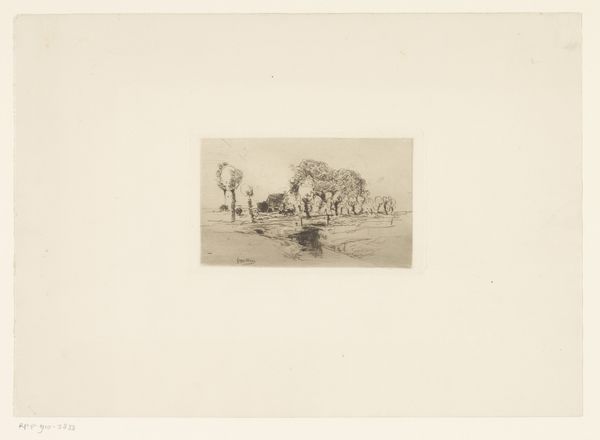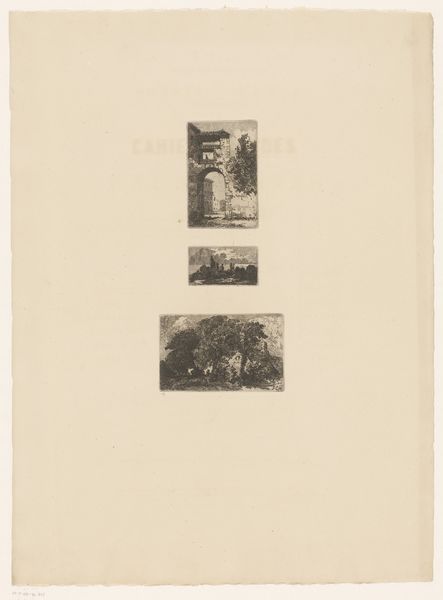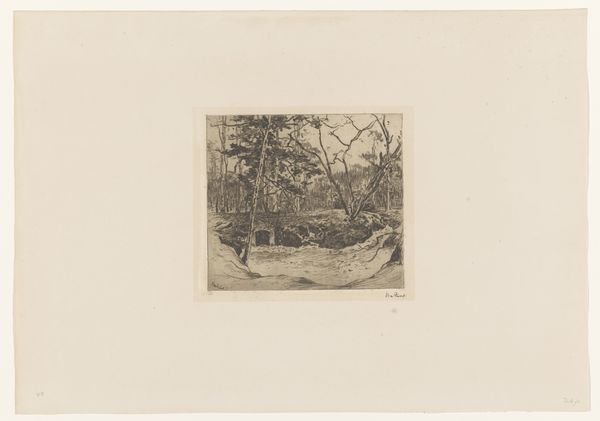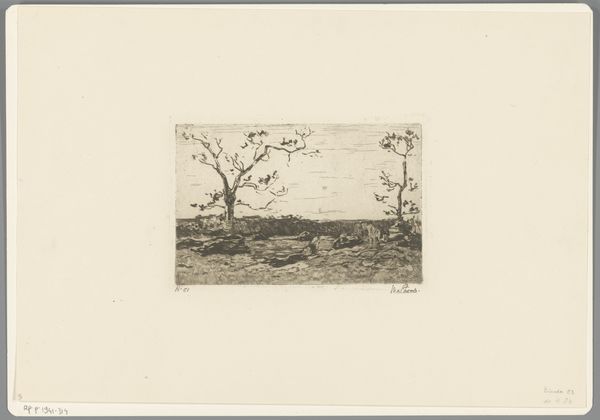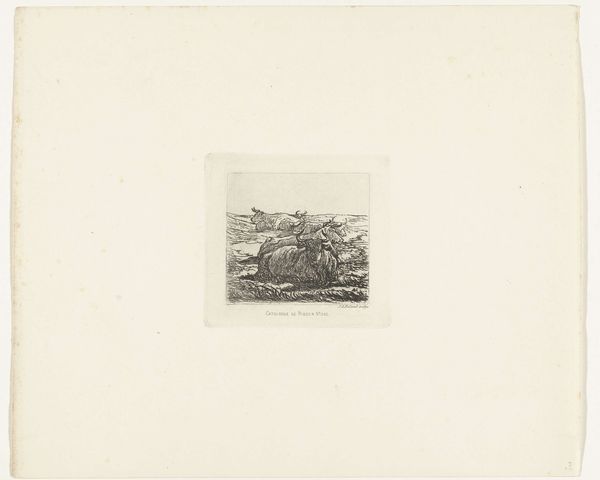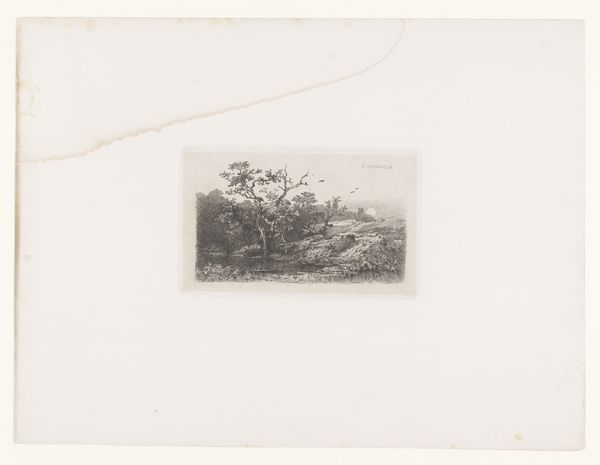
Landskab med en kone, der bærer en kurv. Parti fra Kullen 1886
0:00
0:00
print, etching
# print
#
etching
#
landscape
#
genre-painting
Dimensions: 71 mm (height) x 111 mm (width) (plademaal)
Curator: Up next we have Bernhard Ulrik Middelboe's "Landscape with a Woman Carrying a Basket. Part from Kullen," an etching from 1886. What are your first impressions? Editor: There's an immediate feeling of loneliness here, isn't there? The solitary figure on that path, the muted tones… It speaks to a certain alienation. Curator: Interesting. As an etching, we can delve into the materiality of the printmaking process itself. Consider the tools used—the needle, the acid—to carve the image onto the metal plate, and the labor involved in producing these kinds of images for wider circulation. How does this industrial process, then, intersect with its depiction of rural life? Editor: Right, and it’s key to understand the social context here. Middelboe’s piece arrives in the wake of rapid industrialization—it’s hard not to see that lone figure as representative of marginalized rural communities amidst great upheaval. Were they displaced by the shift in labour toward urban factories? Curator: That’s certainly a possible interpretation, viewing this etching not just as an aesthetic object, but as a document reflecting contemporary societal anxieties and the shift from agricultural economies. One can examine where it was produced, how it was consumed. Did the growing middle classes collect similar landscape prints? What was its commodity status at the time? Editor: And we have to remember that images of women carrying goods—or water, or burdens—are powerful symbolic and often loaded tropes throughout art history. We might ask who benefits from this portrayal? Is the woman's labor further exploited and aestheticized even here, within the image? Curator: Good points. I’m also wondering about Middelboe’s selection of this vista. This corner of Kullen, as the subtitle suggests… How does this particular landscape signify within the broader artistic and cultural landscape of late 19th century Denmark? Was there an increasing romanticisation of rural areas among city-dwellers? Editor: I see Middelboe’s print as more than just a picture; it's a microcosm of larger societal tensions concerning labor, gender, and rural displacement in a changing world. It really brings together so many pertinent points for discussion! Curator: Exactly, from exploring the techniques and material conditions that brought this etching into being, to considering the way it embodies social dynamics through a deceptively simple landscape, we get the pulse of 1880s Denmark.
Comments
No comments
Be the first to comment and join the conversation on the ultimate creative platform.
